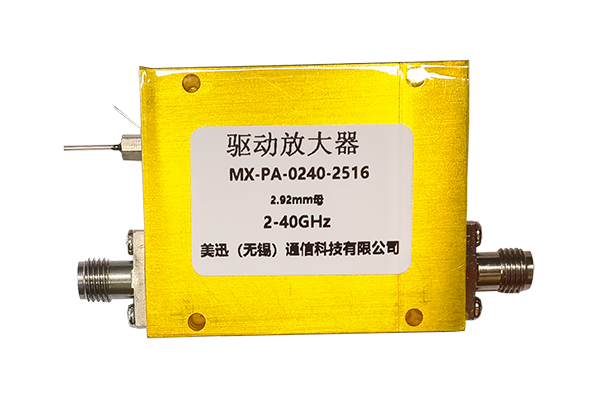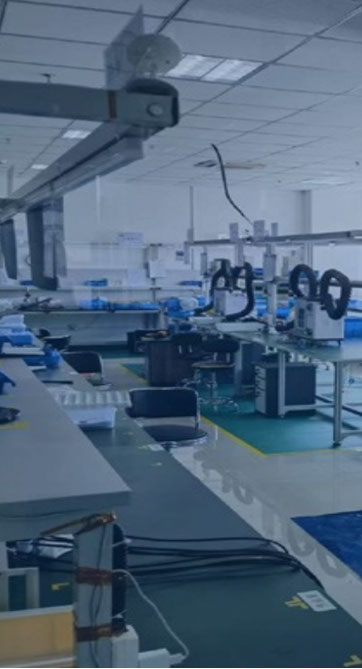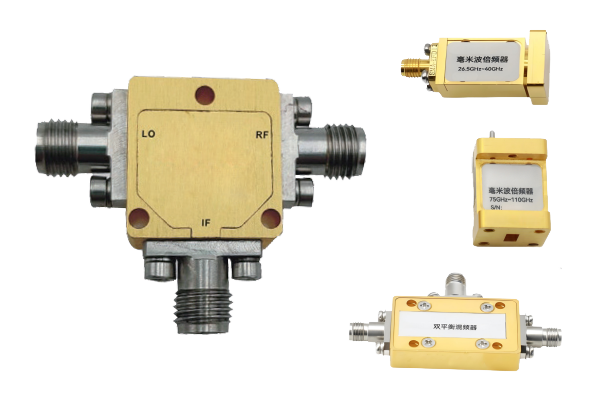
Pin diode components are considered indispensable in advanced RF applications because of their core operational properties Their ability to operate with fast state changes and low capacitance while maintaining minimal insertion loss fits them to switching modulation and attenuation tasks. The operative principle for PIN diode switching centers on bias-controlled current modulation. A change in bias voltage transforms the depletion-region width of the p–n junction, affecting conductance. Controlling the bias point makes it possible for PIN diodes to switch at microwave frequencies with low distortion
PIN diodes find placement inside complex circuit frameworks when precise timing and control is required They can serve in RF filter networks to selectively transmit or block specific frequency ranges. Additionally their ability to handle elevated power levels makes them fit for amplifier power divider and generator circuits. Advances producing smaller and efficient PIN diodes have widened their roles in modern wireless and radar applications
Evaluating Coaxial Switch Design and Functionality
Designing coaxial switches involves a delicate process that must account for many interrelated parameters Key factors such as switch category operating band and insertion loss shape the coaxial switch performance. A good coaxial switch design aims to minimize insertion loss and maximize isolation across ports
Assessment of switch performance typically measures metrics including return loss insertion loss and isolation. These values come from combined use of simulations theoretical predictions and experimental validation. Accurate performance evaluation is key to ensuring coaxial switches operate dependably
- Coaxial switch analysis typically employs simulation tools, analytical techniques and experimental procedures
- The behavior of a coaxial switch can be heavily influenced by temperature impedance mismatch and manufacturing tolerances
- Recent advances emerging trends and novel developments in coaxial switch design focus on improving metrics while reducing size and power use
Optimizing LNA Designs for Performance
Refining the LNA for better performance efficiency and gain underpins superior signal fidelity in systems That involves meticulous transistor choice biasing arrangements and topology selection. High quality LNA layouts suppress noise sources and deliver amplified signals with limited distortion. Simulation and modeling techniques are essential for analyzing the noise consequences of design options. Securing a low Noise Figure indicates superior capability to amplify while adding little noise
- Choosing transistors with inherently low noise characteristics is critically important
- Properly set optimal and appropriate biasing reduces transistor noise generation
- Topology decisions critically determine how noise propagates in the circuit
Implementing matching networks noise reduction strategies and feedback control enhances LNA outcomes
RF Signal Routing with Pin Diode Switches

Pin diode based switches enable adaptable and effective RF signal routing in various use cases Fast state changes in these devices permit agile dynamic routing of RF signals. Key benefits include minimal insertion loss and strong isolation to limit signal deterioration during switching. Common uses encompass antenna selection duplexers and phased array implementations
The switching behavior is governed by voltage driven modulation of the diode’s resistance. In its open state the diode’s resistance is high enough to stop signal flow. The application of a positive bias reduces device resistance and permits RF passage
- Further advantages include fast switching low power requirements and compact design of PIN diode switches
Various architectures configurations and designs of PIN diode switching networks enable complex routing operations. Linking multiple PIN switches produces dynamic matrices that allow adaptable signal path configurations
Assessing the Efficacy of Coaxial Microwave Switches

Thorough assessment and testing of coaxial microwave switches are necessary to guarantee reliable system operation. Several influencing factors such as insertion reflection transmission loss isolation switching speed and frequency range determine performance. An exhaustive evaluation procedure measures these parameters across varied operating environmental and test conditions
- Moreover the evaluation must factor in reliability robustness durability and environmental stress tolerance
- In the end the outcome of rigorous evaluation supplies essential valuable and critical information for switch selection design and optimization
Extensive Review on Minimizing Noise in LNA Designs
LNA circuits play a crucial role in wireless radio frequency and RF systems by boosting weak inputs and restraining internal noise. The review supplies a broad examination analysis and overview of methods to diminish noise in LNAs. We explore investigate and discuss key noise sources including thermal shot and flicker noise. We also examine noise matching feedback circuitry and optimal biasing strategies to mitigate noise contributions. It highlights recent progress including advanced semiconductor materials and novel circuit topologies that cut noise figure. By giving a clear understanding of noise reduction principles and practices this article aims to assist researchers and engineers in developing high performance RF systems
Rapid Switching System Uses for PIN Diodes

PIN diodes display exceptional unique and remarkable characteristics making them suitable for high speed switching Their small capacitance and low resistance facilitate high speed switching suitable for accurate timing control. In addition PIN diodes display linear voltage response that supports precise amplitude modulation and switching performance. Their adaptable flexible and versatile nature makes them suitable applicable and appropriate for broad high speed applications Examples of deployment include optical communication systems microwave circuits and signal processing equipment and devices
IC Based Coaxial Switch and Circuit Switching Technologies
Integrated circuit coaxial switching technology brings enhanced capabilities for signal routing processing and handling within electronics systems circuits and devices. The ICs are designed to direct manage and control coaxial signal flow offering high frequency operation and reduced propagation insertion latency. Miniaturization through IC integration results in compact efficient reliable and robust designs fit for dense interfacing integration and connectivity scenarios
- By carefully meticulously and rigorously applying these approaches designers can realize LNAs with outstanding noise performance enabling sensitive reliable electronic systems By rigorously meticulously and carefully implementing these techniques practitioners can achieve LNAs with remarkable noise performance for sensitive reliable electronics With careful coaxial switch meticulous and rigorous deployment of these approaches developers can accomplish LNAs with outstanding noise performance enabling trustworthy sensitive electronics With careful meticulous and rigorous deployment of these approaches developers can accomplish LNAs with outstanding noise performance enabling trustworthy sensitive electronics
- Use scenarios include telecommunications data communication systems and wireless networks
- Aerospace defense and industrial automation are key domains for integrated coaxial switch technology
- These technologies appear in consumer electronics A V gear and test and measurement setups
mmWave LNA Engineering Considerations

At mmWave frequencies LNAs must contend with greater signal attenuation and intensified influence from noise sources. At high mmWave frequencies parasitic capacitances and inductances can dominate requiring precise layout and part selection. Reducing input mismatch and boosting power gain are critical essential and important for LNA functionality at mmWave. Device selection including HEMTs GaAs MESFETs and InP HBTs plays a decisive role in attaining low noise figures at mmWave. Moreover the implementation and tuning of matching networks is critical to achieving efficient power transfer and correct impedance matching. Package parasitics must be managed carefully as they can degrade mmWave LNA behavior. Adopting low loss transmission media and careful ground plane strategies is essential necessary and important to cut reflections and retain bandwidth
PIN Diode Behavior Modeling for RF Switching
PIN diodes exist as key components elements and parts in several RF switching applications. Comprehensive accurate and precise characterization of these devices is essential to enable design development and optimization of reliable high performance circuits. This requires analyzing evaluating and examining electrical properties including voltage current resistance impedance and conductance. Additionally frequency response bandwidth tuning properties and switching speed latency or response time are assessed
Additionally the development of accurate models simulations and representations for PIN diodes is vital essential and crucial for predicting their behavior in RF systems. Various modeling approaches such as lumped element distributed element and SPICE models are used. Which model simulation or representation to use depends on the particular application requirements and the expected required desired accuracy
State of the Art Techniques for Low Noise Amplifier Design
Developing LNAs involves diligent consideration of circuit topology and components to obtain optimal noise performance. Novel and emerging semiconductor progress supports innovative groundbreaking sophisticated approaches to design that reduce noise significantly.
Some of the techniques include using implementing and employing wideband matching networks selecting low noise transistors with high intrinsic gain and optimizing biasing schemes strategies or approaches. Furthermore advanced packaging and thermal control strategies play an essential role in lowering external noise contributions. By meticulously carefully and rigorously applying these methods developers can produce LNAs with superior noise performance enabling sensitive reliable electronics
